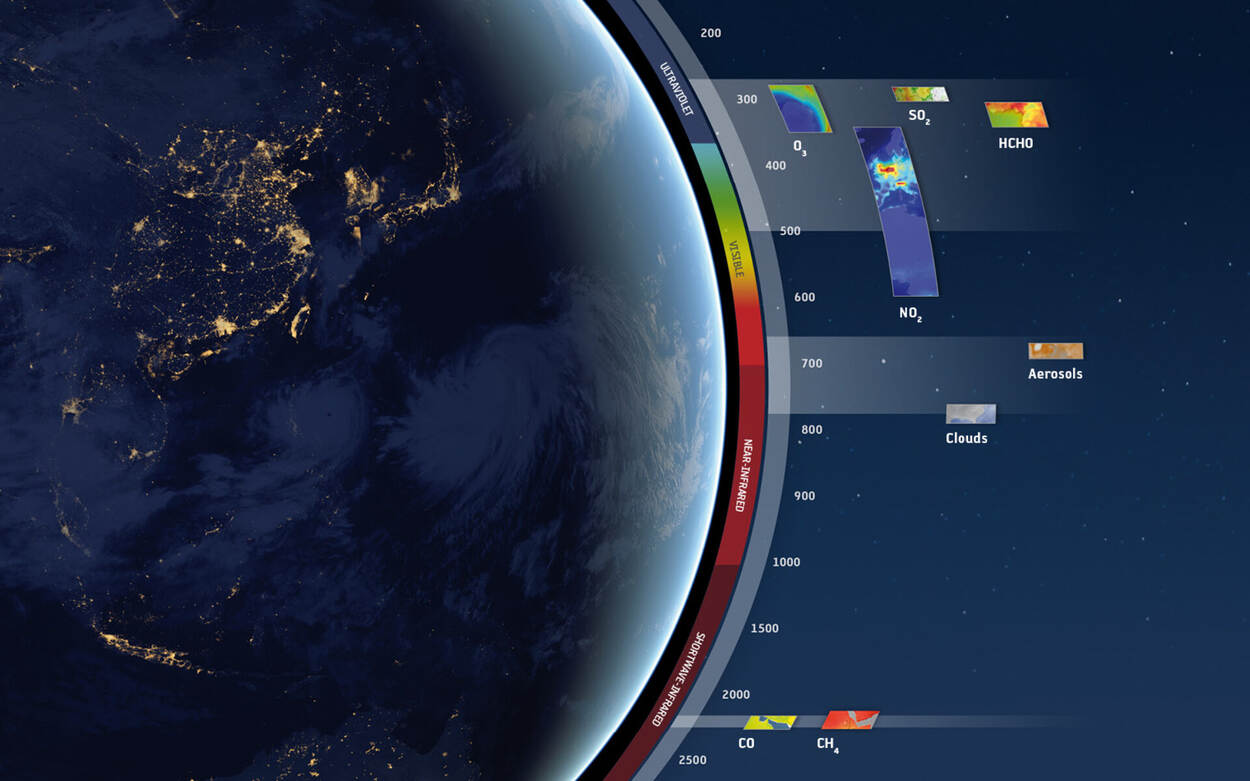Documentation
For the latest version of all TROPOMI Level 1 & Level 2 technical documentation: Please visit the Sentinel-5P document library to access data product-specific documents including Readme (PRF), Product User Manuals (PUM) and Algorithm Theoretical Basis document (ATBD) as well as all Input/Output documentation and some supporting description of auxiilary data.
Frequently used links
The TROPOMI Monitoring Portal provides comprehensive information and mapping of the Level 1 instrument and calibration status.
Use the Level 2 QC Portal. to access data quality information for all released Level 2 TROPOMI data products (ie. NO2, O3, CH4, aerosol index).
For the latest TROPOMI validation reports and information please visit the S5P/TROPOMI VDAF site.
All Level 1 and Level 2 data are freely available via the Sentinel-5P Data Hub.
Tools for working with TROPOMI data
Several tools are useful and freely available for analyzing and visualizing TROPOMI data files. A list including brief descriptions and links are provided below.
S5P-PAL - Visualization & mapping website for TROPOMI NO2, CO, CH4, and SO2. A description of use cases is also given on this site.
Atmospheric Toolbox - This site aims to provide scientists with software tools (includinge HARP, see below) for ingesting, processing, and analyzing atmospheric remote sensing data. Some of the satellite data supported by the Toolbox include TROPOMI (Sentinel-5P), Aeolus, GOME-2 (MetOp), and OMI (Aura). The toolbox also supports model data such as CAMS and data from grounds based instruments such as provided by EVDC. The user forum also provides Q&A discussion and support for these tools.
Panoply - Visualization tool designed to plot geo-referenced data including the netCDF format used for TROPOMI data files. This tool can also be used to view the TROPOMI data file structure.
Working with netCDF data - TROPOMI data uses the netCDF format. This document provides references to software packages that may be used for manipulating or displaying netCDF data and includes information about both freely-available and licensed (commercial) software that can be used with netCDF data. Note: not all netCDF tools and software will necessarily be able to handle TROPOMI file structure.
PyCAMA - A python-based tool designed to analyze all TROPOMI data files parameters. PyCAMA stands for Python “Correleer Alles met Alles” (Correlate Everything with Everything). The PyCAMA toolkit is useful for algorithm developers and validation researchers to perform quick checks of the output from level 2 retrieval algorithms. It can be used to read in TROPOMI swaths from various level 2 files, for which the correlations between all given parameters are calculated (hence the name “correlate everything with everything”). This software is being run at the PDGS data processing facility to extract key data quality parameters and can be used to produce Level 3 gridded data as well.
HARP - Software designed to serve as a data harmonization toolset for scientific earth observation data. Note: Harp tools can be used to tranform TROPOMI data into so-called Level 3 data (lat-lon fixed grid). Once in Level 3 format, the output from Harp can be read directly in for example, QGIS.
ADAGUC - Another visualization tool design currently designed to plot many types of data including satellite data from OMI and TROPOMI. Datasets from different instruments are converted to the ADAGUC data product standard format and are made available to other users by using the OGC Web Services. Satellite swath data can be retrieved using the Web Feature Service. Using the Web Services it is possible to reproject, resample and make selections in space and time.
